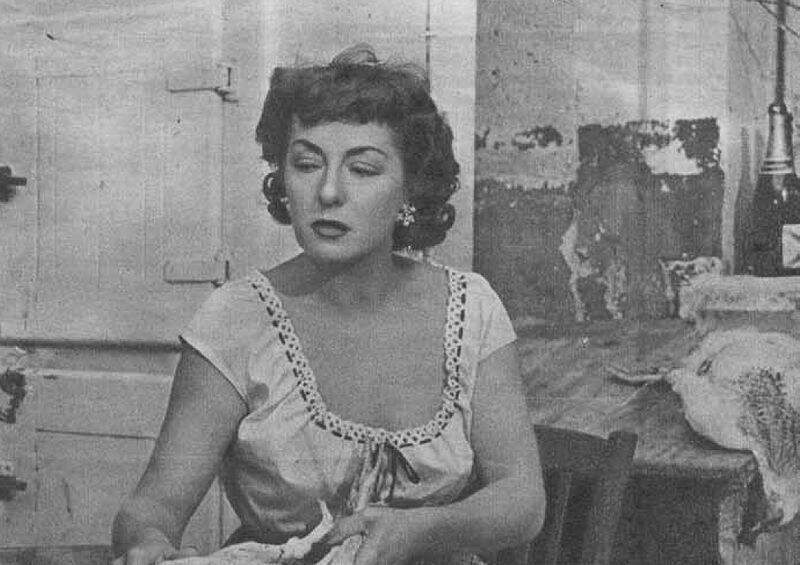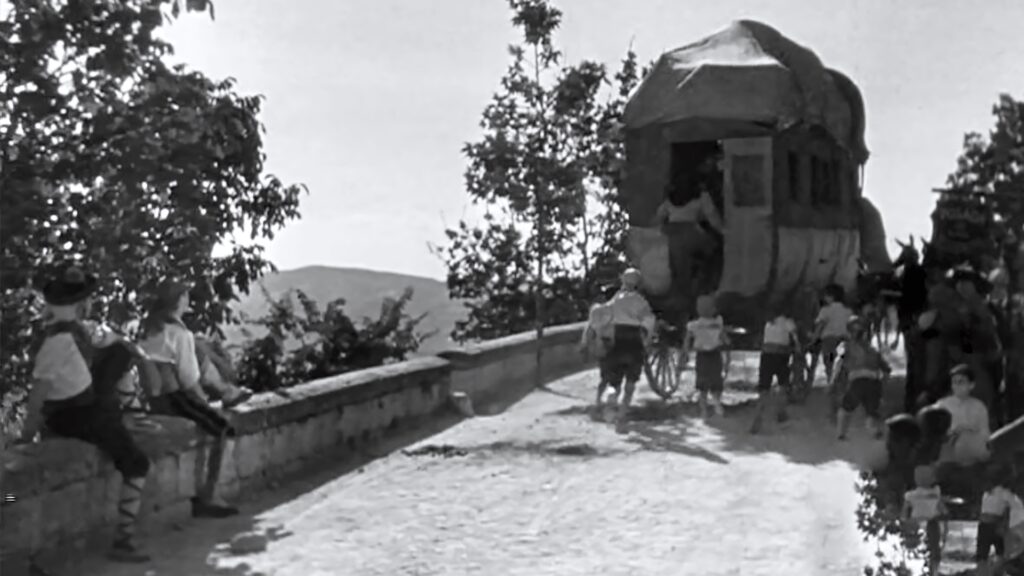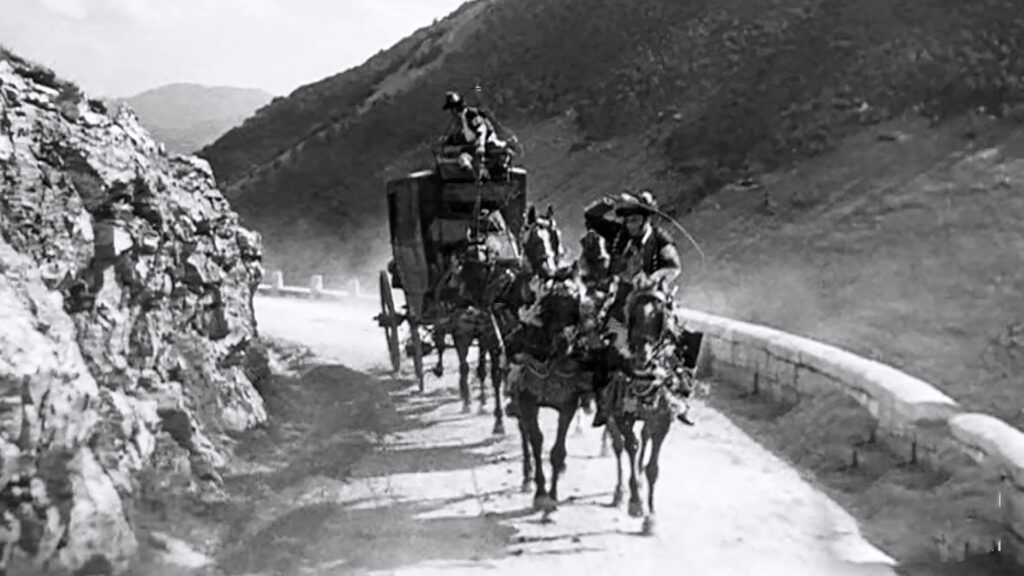Set of the film Carmen
Historical landmark
In the summer of 1942 San Donato Val di Comino became the set for an important Italian-French film, produced by Scalera Film. The film was Carmen and was shot with great means, top actors and technicians, many extras and reconstructions.
The interiors were reconstructed at the Scalera studios in Rome, while the exteriors were shot in San Donato because "bears and wolves still live in its wild mountains, which lend themselves well to the smugglers' scenes." The locations were Via Mevati, the highway adjacent to Cappelletta and Forca d'Acero.
The troupe arrived in the village one morning in June 1942. The actors were top-notch: Viviane Romance, Jean Marais, Lucien Coëdel, Julien Bertheau, Adriano Rimoldi, Elli Parvo. The director was Christian Jaque, the set designer Robert Gys, the costume designer Marcel Escoffier, the director of photography Ubaldo Arata, the production manager Arturo Ambrosio: all names that have gone down in film history.
Actors and technicians will remember the "picturesque" life of those days because they shared homes and many daily moments with Sandonateses. The work on the set required considerable effort. In the spectacular stagecoach chase scene, two horses died and eighteen were injured.
After the September 8 armistice, the Germans, who badly digested Italian treachery, blocked the film's release. On June 6, 1944, in Vichy, the film was screened in private to Marshal Pétain, who complimented director Christian Jacque and told him, "Nice effort!" Then Pétain leaned on his cane and left because the Allied landing in Normandy was in progress.
The film was released in Italian and international theaters beginning in 1945, arousing great interest among moviegoers. In the United States it was positively reviewed by the New York Times and major newspapers, "A gigantic production, beautifully photographed in the mountains of Italy, superbly adapted, directed and played."
San Donato Val di Comino continues to celebrate its connection to cinema, keeping alive the memory of those days of cinematic glory. Visit San Donato and stroll through the streets that were the scene of this historic production. Discover the stories and legends that make this village a fascinating place steeped in history.
The interiors were reconstructed at the Scalera studios in Rome, while the exteriors were shot in San Donato because "bears and wolves still live in its wild mountains, which lend themselves well to the smugglers' scenes." The locations were Via Mevati, the highway adjacent to Cappelletta and Forca d'Acero.
The troupe arrived in the village one morning in June 1942. The actors were top-notch: Viviane Romance, Jean Marais, Lucien Coëdel, Julien Bertheau, Adriano Rimoldi, Elli Parvo. The director was Christian Jaque, the set designer Robert Gys, the costume designer Marcel Escoffier, the director of photography Ubaldo Arata, the production manager Arturo Ambrosio: all names that have gone down in film history.
Actors and technicians will remember the "picturesque" life of those days because they shared homes and many daily moments with Sandonateses. The work on the set required considerable effort. In the spectacular stagecoach chase scene, two horses died and eighteen were injured.
After the September 8 armistice, the Germans, who badly digested Italian treachery, blocked the film's release. On June 6, 1944, in Vichy, the film was screened in private to Marshal Pétain, who complimented director Christian Jacque and told him, "Nice effort!" Then Pétain leaned on his cane and left because the Allied landing in Normandy was in progress.
The film was released in Italian and international theaters beginning in 1945, arousing great interest among moviegoers. In the United States it was positively reviewed by the New York Times and major newspapers, "A gigantic production, beautifully photographed in the mountains of Italy, superbly adapted, directed and played."
San Donato Val di Comino continues to celebrate its connection to cinema, keeping alive the memory of those days of cinematic glory. Visit San Donato and stroll through the streets that were the scene of this historic production. Discover the stories and legends that make this village a fascinating place steeped in history.
Do you want to visit this attraction?
Book your vacation now.
Set of the film Carmen,
Mevati Street,
182,
03046 San Donato Val di Comino FR,
Italy
-
Via Mevati, 182, 03046 San Donato Val di Comino FR, Italy
Details
Suitable for
- Couples, Groups, Solo travelers
Best season to go
- All the seasons
Duration / time of visit
- Up to 1 hour
Type of tour
- This attraction is part of a guided tour, Small groups tour, Solo tour, Private tour
Are audio guides provided?
- Yes, upon request
Available languages
- English, Italian
Ticket price
- Does not require a ticket
